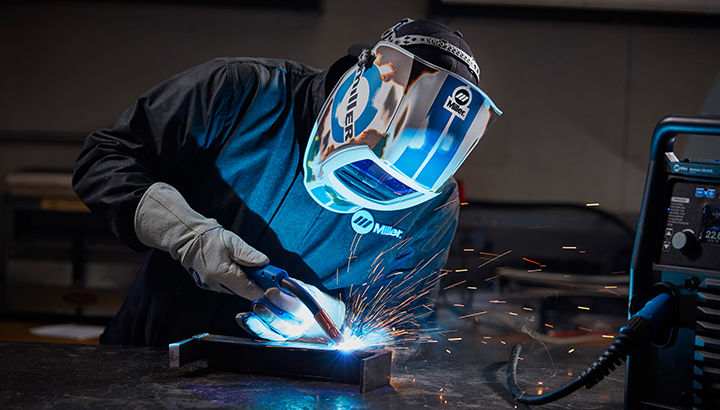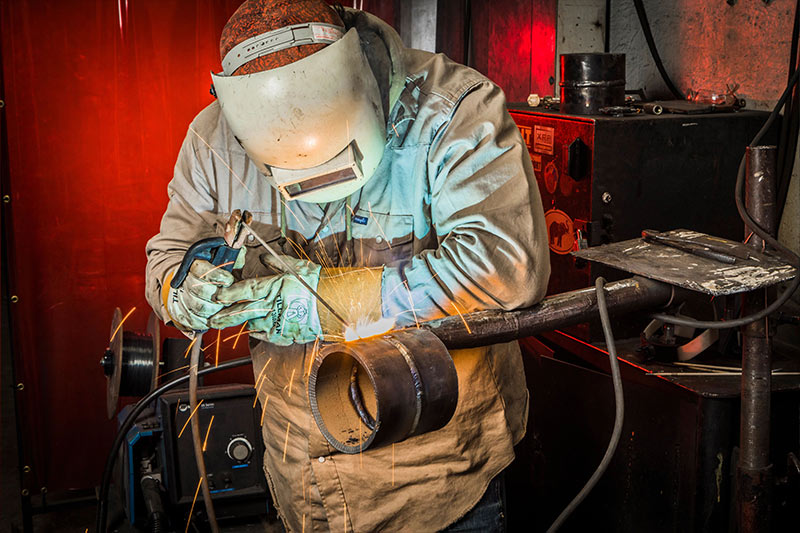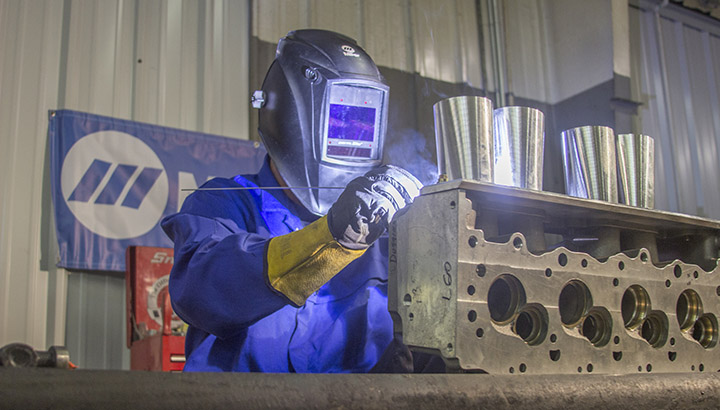Usual Welding Repair Service Issues and How to Address Them Properly
Welding repair work frequently experience a series of issues that can jeopardize the stability of the last item. Typical troubles consist of inadequate penetration, porosity, and misalignment, amongst others. Each problem presents unique difficulties that require details techniques for resolution. Understanding these issues is necessary for welders intending to boost their outcomes and skills. This conversation will certainly check out these common welding repair work problems and reliable approaches to address them.
Inadequate Penetration
Insufficient infiltration takes place when the weld metal fails to fully fuse with the base product, leading to weak joints and prospective structural failings. This concern often originates from inadequate heat input, inaccurate electrode angle, or inappropriate welding speed. Welders may encounter inadequate penetration as a result of a miscalculation of the essential specifications for a specific product thickness or type. Furthermore, contamination on the base material's surface area can impede reliable bonding, aggravating the issue. To resolve inadequate infiltration, welders must guarantee proper settings on their tools and maintain a tidy job surface area. Regular inspection of welds is suggested to determine any type of shortages early, enabling prompt modifications and the prevention of endangered structural integrity in bonded assemblies.
Porosity
Porosity is a typical flaw in bonded joints that materializes as small gas bubbles caught within the weld steel. This defect can jeopardize the honesty of the weld, resulting in reduced stamina and potential failure under stress and anxiety. Belgrade. Porosity usually emerges from contamination, dampness, or improper welding strategies, which enable gases to leave into the molten weld pool. To resolve porosity, welders ought to ensure appropriate surface preparation, preserve a clean workplace, and utilize appropriate welding criteria. Furthermore, selecting the best filler material and securing gas can reduce gas entrapment. Normal inspection and screening of welds can help identify porosity early, assuring timely rehabilitative actions are taken, therefore protecting the quality and reliability of the bonded structure
Imbalance
Imbalance in welding can emerge from different variables, including incorrect configuration and thermal growth. Comprehending the root causes is crucial for efficient resolution. Numerous correction techniques are readily available to realign components and ensure architectural stability.
Sources of Imbalance
Welding misalignment frequently stems from a selection of underlying issues that can jeopardize architectural stability. One key cause is incorrect fit-up of elements before welding, which can cause voids and unequal surfaces. Variants in thermal development throughout the welding procedure can likewise result in distortion, particularly if the products being signed up with have various coefficients of expansion. Furthermore, insufficient fixturing and securing may fail to hold parts safely in position, leading to activity during welding. Improperly conserved devices, including welding devices and tools, may present disparities in the weld grain, further adding to imbalance. Operator mistake, stemming from not enough training or experience, can likewise play a considerable duty in producing misaligned welds.

Modification Strategies Offered
Attending to misalignment properly calls for a combination of corrective strategies customized to the details issues handy. One common approach is making use of components or jigs to hold components in the appropriate placement throughout welding, making certain regular alignment. Furthermore, preheating the products can help in reducing distortion and improve fit-up. For considerable imbalance, mechanical adjustment methods, such as making use of hydraulic jacks or clamps, can be employed to fix the placement prior to welding. Post-weld warmth treatment might also be required to soothe stress and anxieties brought on by imbalance. Ultimately, cautious assessment and modification during the arrangement stage can protect against misalignment concerns from ending up being significant troubles, advertising a smoother welding procedure and enhancing overall architectural honesty.
Distortion
Distortion is a typical challenge in welding that can emerge from numerous factors, consisting of uneven heating and cooling. Understanding the root causes of distortion is vital for implementing reliable avoidance strategies. Resolving this concern not only improves architectural honesty however additionally boosts the total quality of the weld.
Causes of Distortion
When subjected to the intense warmth of welding, materials typically undertake changes that can result in distortion. This phenomenon mainly occurs from thermal expansion and tightening during the welding procedure. As the weld location warms up, the material broadens; upon air conditioning, it gets, which can develop internal stress and anxieties. In enhancement, uneven heating throughout a workpiece can worsen these tensions, resulting in warping or bending. The kind of material also plays a considerable role; metals with varying thermal conductivity and coefficients of expansion may react in a different way, causing unpredictable distortions. Inadequate joint design and poor fixturing can add to misalignment throughout welding, increasing the probability of distortion. Understanding these causes is crucial for reliable welding fixing and avoidance techniques.
Avoidance Techniques
Reliable prevention methods for distortion throughout welding focus on controlling heat input and guaranteeing appropriate joint design. Keeping a constant warmth input aids to lessen thermal development and tightening, which can result in distortion. Utilizing methods such as pre-heating the workpiece can likewise reduce the temperature gradient, advertising consistent home heating. Additionally, selecting appropriate joint designs, such as T-joints or lap joints, can boost security and lower stress concentrations. Executing correct fixturing to safeguard the work surfaces in position further help in maintaining positioning during the welding process. Staggered welding sequences can distribute warm extra equally, protecting against localized distortion. By applying these methods, welders can greatly reduce the chance of distortion and improve the overall top quality of their welds.
Cracking
Splitting is a common issue experienced in welding repairs, frequently resulting from various variables such as inappropriate air conditioning rates, material selection, or poor joint preparation. The event browse around this site of splits can substantially endanger the stability of the weld, causing prospective failures during procedure. To resolve this concern, welders best flux core wire have to initially assess the origin causes, ensuring that materials work and properly picked for the specific application. Additionally, managing the air conditioning rate during the welding procedure is crucial; rapid air conditioning can induce stress and result in breaking. Appropriate joint style and preparation also contribute to lessening the risk. Carrying out these methods can enhance weld top quality and durability, inevitably lowering the likelihood of fracturing in finished weldments.

Incomplete Fusion
A significant concern in welding repair services is insufficient blend, which occurs when the weld metal does not sufficiently bond with the base product or previous weld passes - Montana Mobile Welding and Repair Fabrication. This issue can cause weak points in the joint, possibly endangering the stability of the welded structure. Elements adding to insufficient fusion consist of not enough heat input, improper welding strategy, and contamination of the surfaces being signed up with. To resolve this problem properly, welders should ensure correct pre-weld cleaning and surface prep work, in addition to change their welding specifications to attain sufficient infiltration and blend. Regular inspection during the welding process can likewise aid recognize incomplete combination early, enabling timely restorative measures to boost the general quality of the weld
Overheating
While welding fixings can boost architectural integrity, overheating presents a considerable obstacle that can result in material deterioration. Excessive warm during welding can alter the mechanical buildings of steels, resulting in minimized stamina, boosted brittleness, and warping. This sensation is particularly crucial in high-stress applications where architectural integrity seal weld is vital. Identifying getting too hot can involve visual assessments for staining or distortion, as well as keeping track of temperature level throughout the welding procedure. To reduce the threats connected with getting too hot, welders should employ appropriate strategies, such as regulating warm input, readjusting travel speed, and making use of ideal filler materials. Furthermore, carrying out pre- and post-weld warmth therapies can assist restore material homes and enhance the total quality of the repair, making certain long-lasting performance and safety and security.
Often Asked Questions
What Are the Usual Signs of a Welding Flaw?

How Can I Evaluate My Welds for Top quality?
To examine welds for top quality, one can utilize aesthetic evaluations, ultrasonic testing, and radiographic methods. Each method assures structural honesty, determines problems, and confirms adherence to specified criteria, inevitably improving the integrity of the bonded joints.
What Safety Preventative Measures Should I Take While Welding?
When welding, one must prioritize security by wearing ideal individual safety equipment, making sure correct air flow, safeguarding combustible materials away, maintaining a clean office, and recognizing surroundings to protect against mishaps and injuries.
Can I Repair a Weld Without Redoing the Entire Joint?
Fixing a weld without redoing the entire joint is feasible, depending upon the damages (Belgrade). Strategies such as grinding, adding filler material, or making use of a welding process can effectively attend to certain flaws while protecting the bordering framework
What Equipment Are Important for Reliable Welding Repair Works?
Crucial tools for effective welding repairs include a welding maker, cord brush, grinder, protective equipment, clamps, and filler materials. Each tool plays a crucial role in making sure high quality and safety and security during the repair work process. Porosity generally develops from contamination, wetness, or inappropriate welding methods, which enable gases to run away right into the molten weld pool. Badly maintained equipment, consisting of welding equipments and devices, may introduce variances in the weld bead, additional adding to misalignment. When subjected to the extreme warm of welding, materials frequently go through changes that can lead to distortion. Splitting is a common issue encountered in welding repair work, commonly resulting from different elements such as improper air conditioning rates, material choice, or inadequate joint prep work. A considerable issue in welding fixings is incomplete blend, which happens when the weld metal does not properly bond with the base product or previous weld passes.